Asus ZenFone Max Pro M2 Review
Where to buy
 14999Buy Now
14999Buy Now
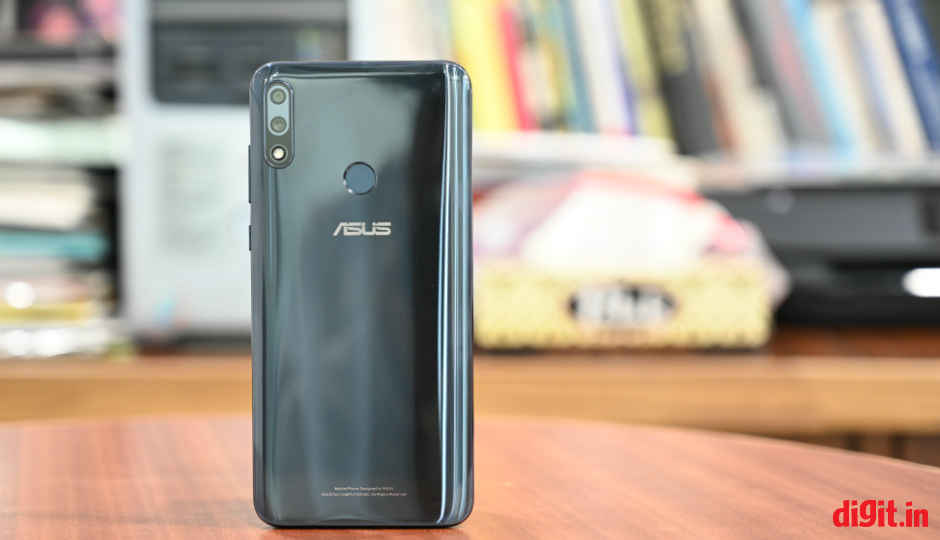
 14999 /- Buy Now
14999 /- Buy Now
Asus ZenFone Max Pro M2 Price in India
Asus ZenFone Max Pro M2 Rating 71100100
Our Verdict
The Asus Zenfone Max Pro M2 has all the elements of a reliable, powerful mid-ranger. It's for those who want a steady performer that can both handle the daily tasks and heavy gaming and lasts long thanks to a massive 5,000mAh battery. It's also a good device to stream videos on. However, the Zenfone Max Pro M2 doesn't have the best camera on offer in that price range. It also has clean stock Android UI which may not ring well with fans of custom launchers like MIUI or ColorOS. Read the review below to find out how the Asus Zenfone Max Pro M2 square up against its rivals.
PROS
- Gorilla Glass 6 on top of a bright, vibrant display
- Better gaming performance than most
- Long battery life
CONS
- Scratch-prone exterior
- Poor low-light capabilities
- Micro-USB port with no fast charging
Asus ZenFone Max Pro M2: Detailed Review
The Asus Zenfone Max Pro M1 was a runaway success. It doggedly tailed the Redmi Note 5 Pro, launching just within few days of it, and became a sturdy alternative to Xiaomi’s offering. The highlight was not only the fastest mid-range processor at that time, or a big 5,000mAh battery but the presence of stock Android that truly kept the Xiaomi juggernaut at bay. After a successful run from April to December, Asus is now retiring the Max Pro M1 for the Zenfone Max Pro M2. The phone is a big upgrade over its predecessor in the spec-sheet as well as the design. With the mid-range segment now having more options than ever, can the Asus Zenfone Max Pro M2 keep the momentum alive? Let’s find out.
Design
The Asus Zenfone Max Pro M2 looks both same and different from its predecessor. It is different because the Max Pro M2 uses a resin-based exterior that’s a bit glossy and has light-reflecting features. It is similar because all the elements like the rear camera and the fingerprint sensor are arranged the same as last time. Up front, there’s a notch in the display and the bezels are even thinner than before.
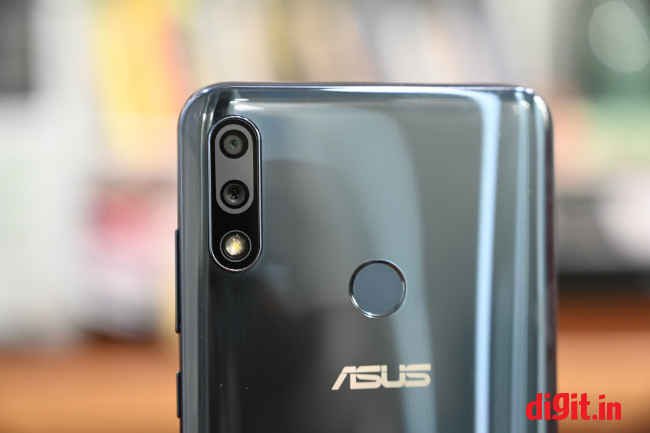
Shiny, resin-based exterior that's also quite scratch-prone
The Zenfone Max Pro M2 looks much better than the vanilla metal bodied look of the earlier Zenfone Max Pro M1. The metal body is reinforced with a reflective, glossy resin shell that looks like glass at first glance. While the resin body makes it a little more durable, it is quite scratch prone as the unit we received for review got scratched quite easily in the pocket. Damaging the phone more than that will be more difficult though since the display on the front is reinforced with Gorilla Glass 6. It’s also the only phone in the under Rs 15,000 price segment to offer Gorilla Glass 6.
Apart from the new glossy exterior, the notch and the Gorilla Glass 6, there’s nothing more to note about the Zenfone Max Pro M2’s design. It’s overly distinctive, but at the same time, Asus has ensured there’s some unique flavour to the design.
Display
One of the few caveats of the Asus Zenfone Max Pro M1 was an inferior display. That seems to have fixed with a brighter, livelier 6.26-inch FHD+ panel on the Asus Zenfone Max Pro M2. It clocked 10 lux higher on our brightness test than the Zenfone Max Pro M1 at 560 lux. While that’s not a big difference, the panel’s backlight has visibly improved. It’s more uniform for one, and the sunlight visibility is much better with the colours looking less washed out. It also has minimum brightness of 7 lux which makes the display really dim in the dark, not putting much strain on the eyes.

Godawful notch enters the mid-range Zenfone lineup
The Max Pro M2 also brings the notch to the mid-range Zenfone lineup. It’s not a wide one thankfully, but all our quips about the notch as a design choice remains. The cut-out in the display houses the front camera, earpiece and a range of sensors. Those same components could also have been implemented on a thicker bezel on top of the panel, but Asus had to keep up with changing times and adopt a notch to offer a higher screen-to-body ratio.
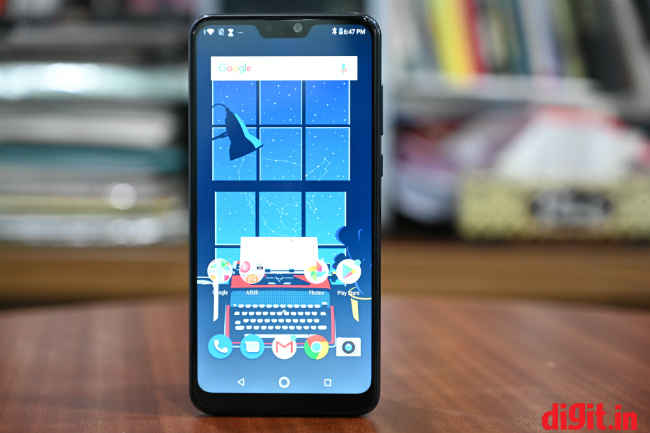
A bright, vibrant panel otherwise
The phone also supports adaptive brightness and adaptive display which discretely lights up the display when the phone is locked and a new notification appears. Furthermore, there’s the night mode that puts a tangerine tint to protect the eyes at night. A new feature is the Smart Screen when keeps the display on when you’re looking at the screen or holding the phone upright. It probably uses the front camera to see if you have your eyes on the panel while the accelerometer is put to use to check if you’re holding it upright. There is a slight impact in battery life when the feature is turned on, though.
The Max Pro M2 implements a visibly better display that makes using the phone a much more enjoyable experience. The fact that it’s also reinforced with Gorilla Glass 6 sweetens the deal even more.
Performance
The Asus Zenfone Max Pro M1 competed spec-by-spec with the Xiaomi Redmi Note 5 Pro. At that time, the Note 5 Pro was the device to beat in the under Rs 15,000 price range. Over the course of the year, that accolade went to the Realme 2 Pro which managed to bring the Snapdragon 660 SoC down to the under-15k price. With the Asus Zenfone Max Pro M2, that’s the phone Asus has to beat, and as expected, both phones have a similar spec-sheet. Even the Max Pro M2 is powered by the top-of-the-line mid-range Snapdragon 660 processor and has RAM variants up to 6GB. However, the storage is capped at 64GB but Asus does offer a dedicated slot for a micro-SD card which expands the storage up tp 512GB.
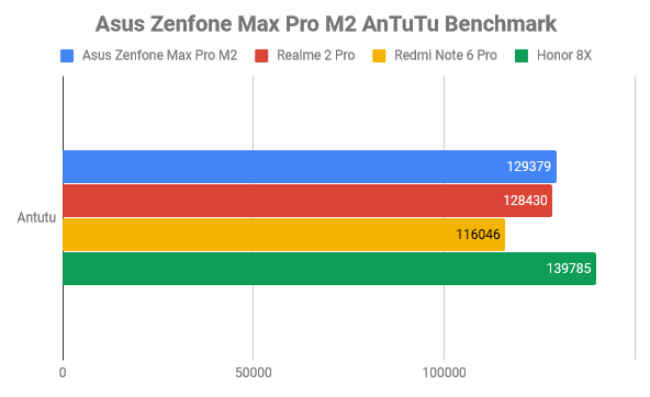
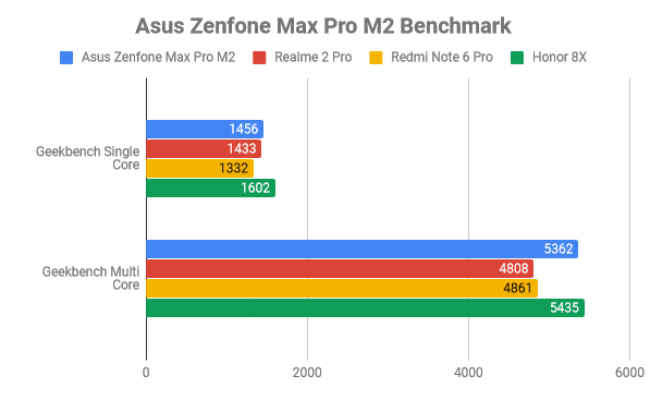
The review unit we received had the performance benchmarks locked out. So we had to sideload the apps, and even then 3DMark and PCMark failed to run. We did manage to get scores for Geekbench and AnTuTu, and they are much higher than what the Asus Zenfone Max Pro M1 scored. The thing to note here is whether the Max Pro M2 performs better than other Snapdragon 660-powered phones.
To answer that, the Max Pro M2 scored 129379 on AnTuTu 7.0, which is higher than all other Snapdragon 660-powered phones. On Geekbench single and multi-core tests, the Max Pro M2 scored 1456 and 5362, both marginally higher than the Realme 2 Pro and the Mi A2. However, the Zenfone Max Pro M2 failed to beat the Honor 8X in performance benchmarks and Honor’s offering is still the best performing phone in that price range.
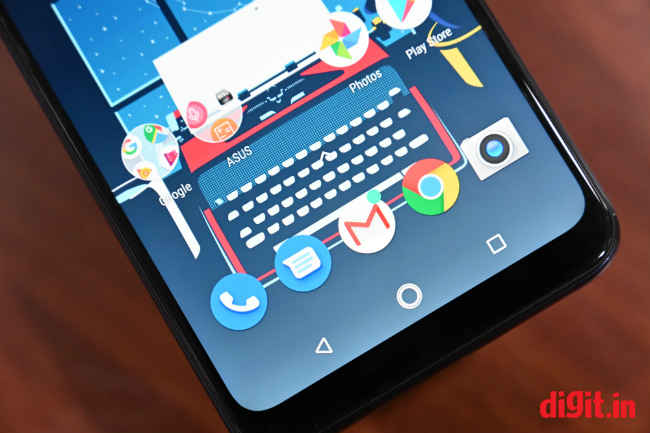
Clean, stock Android
The Asus Zenfone Max Pro M2 feels smoother more thanks to the presence of AOSP. Asus uses an unmodified version of Android Oreo 8.1 in the Max Pro M2. That’s a tad disappointing as the AOSP version of Android 9 Pie is already available and the company could have shipped the phone with the latest Android out of the box. To note here is the fact that even though Android 9 Pie has been out for over two months now and a bevy of Android 9-powered devices already in the market (both old and new), the Zenfone Max Pro M1 is yet to receive the latest update. Asus has notified the update will be rolled out in February 2019. One of the biggest reason to get a stock Android-powered phone is the promise of regular updates at the cost of custom features most third-party UI come with. While Asus has kept pushing monthly security patches and bug fixes every month for the Max Pro M1, the absent version update raises a lot of questions.

Not the latest version though
Nevertheless, the Asus Zenfone Max Pro M2 feels smooth to use. There are no visible lags, at least for the fortnight that we used it for. We installed the usual suite of work-related apps like Dropbox Paper, Feedly, Netflix, etc. as well as the popular social media apps, filling up the storage to around 50 percent. Even then, there was hardly any slowdown.
Games like PubG Mobile ran quite smooth, although at medium graphics. There was no frame drops and the game adapted to the notch by letterboxing the screen. The phone has an NXP SmartAmp that makes PubG Mobile gameplay better by accentuating sounds like footsteps and gunfire so that they can be easily identified. The volume of the single external speaker is also quite loud on the phone.
The Asus Zenfone Max Pro M1 seems to be one of the few phones in that price range to have Widevine L1 certification. You can stream content on Netflix and Amazon Prime Video and watch them in native display resolution.
Camera
Another thing that improved in the Asus Zenfone Max Pro M2 is the camera on the back and the front. The phone relies on a 12+5MP imaging stack now. While that may feel like a downgrade from the 13+5MP setup on the predecessor, Asus is using a larger Sony IMX 486 sensor with 1.25um pixel pitch. The lens also has a wider f/1.8 aperture, EIS, PDAF and 4K video. The 5MP secondary sensor, like last time, is used for depth-sensing. On the front is a 13MP sensor with f/2.0 aperture along with a soft LED flash.
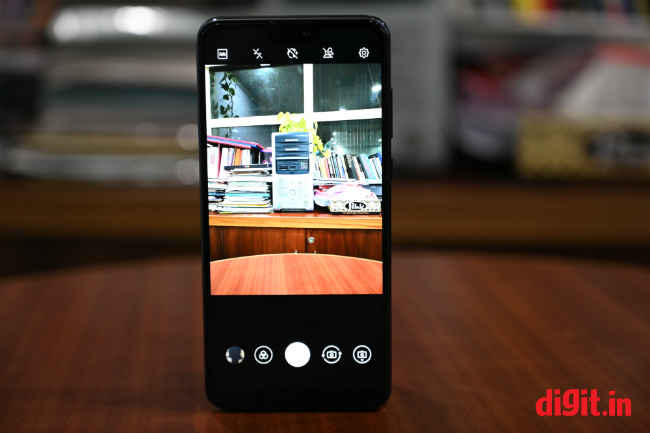
Probably the ugliest camera UI we've come across this year
All these upgrades did have an impact in making the photos come out better, especially in daylight and while taking portraits. In the day, the Zenfone Max Pro M2 takes photos that look pleasant. The green and the blue come out really nice and vibrant while bright colours like yellow and red are saturated. There’s no AI working to recognise scenes though, and that’s a good thing actually. The photos look more natural than one taken by say the Honor 8X in most situations. Even the dynamic range seems to be better than most other phones in that price range.

(Shutter Speed: 1/1115, f/1.8, ISO 100)

(Shutter Speed: 1/100, f/1.8, ISO 160)

(Shutter Speed: 1/100, f/1.8, ISO 160)
Indoors, the phone takes some time to process the photos and you need to hold the phone steady to not make the result shaky. Otherwise, the exposure is pretty much on spot and the photos come out quite sharp with a lot of details.
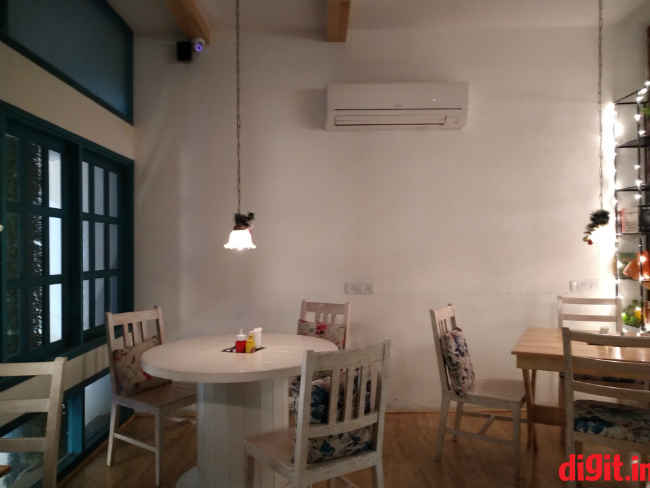
(Shutter Speed: 1/14, f/1.8, ISO 1000)
In low light however, the camera suffers. While it’s genuinely better than its predecessor in taking low-light photos, it’s not quite up there with the likes of the Redmi Note 6 Pro or the Mi A2. The photos have a lot of grain and there’s hardly any sharpness. There’s also significant shutter lag and frankly, this isn’t the best phone for low-light photography.

(Shutter Speed: 1/14. f/1.8, ISO 6400)

(Shutter Speed: 1/14, f/1.8, ISO 6400)
Portraits however, is the USP of the camera. The phone managed to take natural-looking portrait shots with the background blurred. You can control the amount of depth you want in your photos, and keeping the slider somewhere in the middle produces the best results. Photos of people, especially in the day look natural and realistic. The same cannot be said about most Honor, Realme or Oppo devices where a lot of AI-enabled algorithms are used to enhance the beauty.

(Shutter Speed: 1/515, f/1.8, ISO 100)
The front camera seems to be much better too. The selfies are not the best in the segment but are good enough for pleasing your social media addiction.
My only quip was with the camera UI that has remained unchanged from the Zenfone Max Pro M1. Asus is simply using the stock Qualcomm camera app that the chip designer uses in its reference designs. It’s ugly, cluttered and not so intuitive. In its second attempt, Asus could have worked on importing its own ZenUI camera app which looks much better.
Battery
The Asus Zenfone Max Pro M1 relies on a massive 5,000mAh battery for power. While we couldn’t run PCMark to test out the battery, it’s safe to say the battery lasts more than a day, even under heavy usage. Gaming does deplete the battery quicker. We registered the battery falling from 60 percent to 51 percent in a 30-minute session of PubG Mobile. However, if you watch even an hour of Netflix, shoot multiple photos and record videos, and browse social media, you won’t have to plug the phone for charge for more than a day. My biggest quip with the phone is that it doesn't support fast charging and relies on a standard 5W charger that takes ages to top up the phone to full capacity. The big battery on the phone is one of the biggest reasons to buy this phone, and the best part is that the battery doesn’t really make the phone all that heavy.
Bottomline
The Asus Zenfone Max Pro M2 is an even better attempt by Asus at making a mid-range phone. It has all the right ingredients, even though they aren’t always the best. The Max Pro M2 is reliable enough to be considered as one of the best mid-ranger available in India. With the second attempt, Asus finally broke off from the shadows of Xiaomi, at least in terms of the spec-sheet. It still has to beat the Realme 2 Pro in terms of popularity though, and there’s a good reason for this phone to dominate the charts for the next few months now. What we would want to be improved is the camera on the phone, especially the UI and more streamlined version upgrades. But even without them, this is a solid contender to be the best phone in the under-15k segment.
Buy Now
 Moto G5s Plus Gold 64gbRs. 10996 *
Moto G5s Plus Gold 64gbRs. 10996 * Buy Now
Buy Now 10.or E (Beyond Black, 3GB...Rs. 5999
10.or E (Beyond Black, 3GB...Rs. 5999 Buy Now
Buy Now Asus ZenFone Max Pro M2 (Blue,...Rs. 14999
Asus ZenFone Max Pro M2 (Blue,...Rs. 14999 Buy Now
Buy Now
 Asus Zenfone Max M2, Zenfone Max Pro M2 go official in Russia
Asus Zenfone Max M2, Zenfone Max Pro M2 go official in RussiaAsus has launched its upcoming Zenfone Max M2 and Zenfone Max Pro M2 in Russia. Both the phones are now listed on the Taiwanese company’s...
07 - Dec - 2018 Asus Zenfone Max Pro M2 and Zenfone Max M2 specs leaked, company could also launch India-centric variants
Asus Zenfone Max Pro M2 and Zenfone Max M2 specs leaked, company could also launch India-centric variantsAsus is reportedly working on two new smartphones, ZenFone Max Pro (M2) and the Zenfone Max M2, and the apparent specifications of both the...
15 - Nov - 2018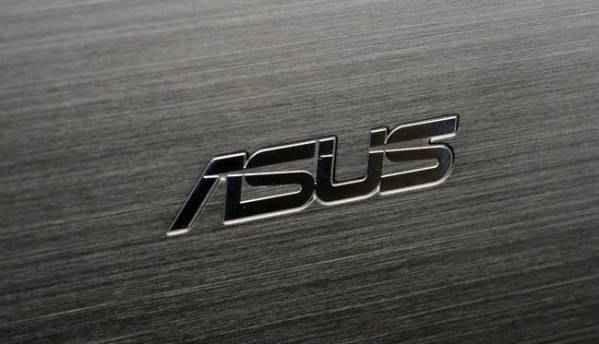 Asus Zenfone Max Pro M2 showed off in YouTube video
Asus Zenfone Max Pro M2 showed off in YouTube videoAhead of its launch on December 11 in Indonesia, the Asus Zenfone Max Pro M2 has been leaked in a video on YouTube showing off the phone’s...
26 - Nov - 2018

The Asus Zenfone Max Pro M1 was a runaway success. It doggedly tailed the Redmi Note 5 Pro, launching just within few days of it, and became a sturdy alternative to Xiaomi's offering. The highli...
---------------------------------------------------------------------------
Visit this link to stop these emails: http://zpr.io/PnAEp



No comments:
Post a Comment